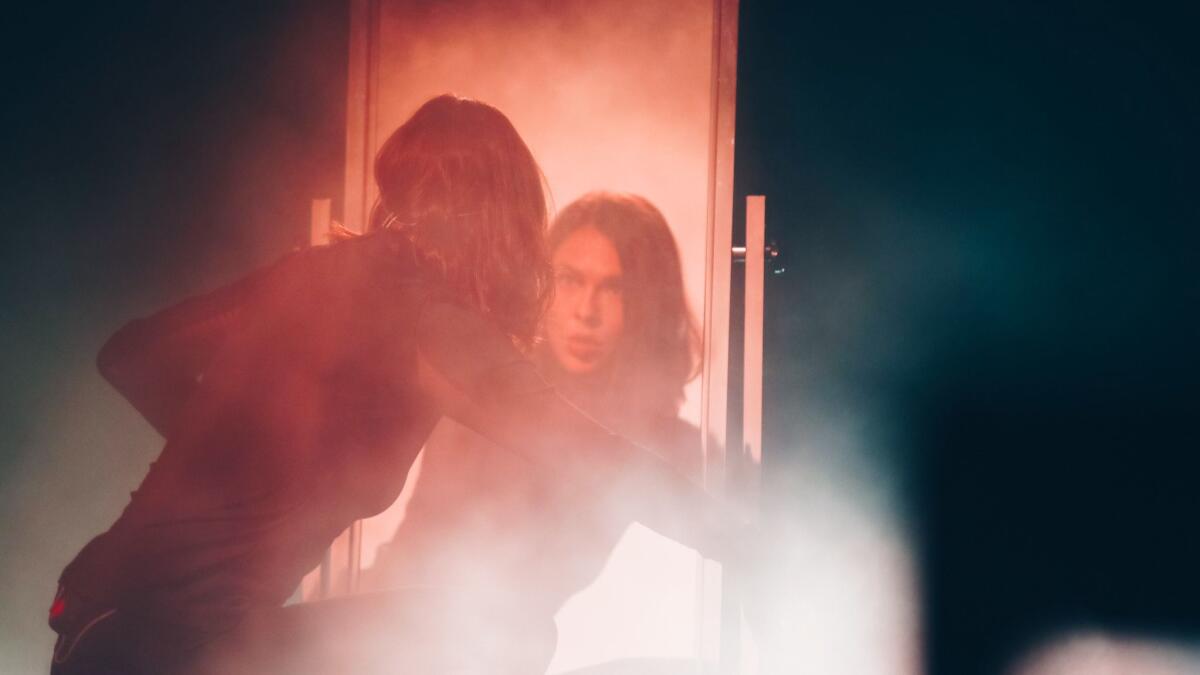What Coachella taught us about the future of dance music

For about a decade after Daft Punk’s landmark 2006 performance, EDM was ascendant at the Coachella Valley Music and Arts Festival.
There have always been DJs and electronic acts at the fest — the Chemical Brothers and the Prodigy played early gigs there — but this strain of high-velocity European dance music, played by superstar DJs in the dance-focused Sahara tent and Coachella main stage, drove a lot of the festival’s 2010’s growth.
It may have also stirred the first grumblings of pandering to mainstream crowds.
But now as the fest grows younger and tastes shift, hip-hop has overtaken the Sahara as the party music of choice. The underground-focused Yuma tent has largely focused on veteran club music DJs like Stephan Bodzin, Nicole Moudaber and Guy Gerber.
And other than Zedd — who has since largely moved on to pop music — the main stage this weekend didn’t have a prime-time EDM act. This means that ambitious acts that want to stand out have to evolve, and maybe act more like a live band if they want to command a stage.
“There are over 100 acts competing for attention. Coachella is about moments — the acts that succeed out there are going to be the ones that give people a reason to share their experience,” said James Hunt of the Australian band Rüfüs Du Sol.
The group tried some interesting ways to provide them. Hunt’s band recently played a sold-out run at the Shrine in L.A., so the members knew they would likely have fair turnout for their show. On the Outdoor Theater on Friday, the band’s singles like “Treat You Better” and “You Were Right” — each significant hits on streaming — had the fizz and power of club music but played with a full band setup that made visual sense on big stage at prime time.
But they also scored an original 360-degree film in the Antarctic, a planetarium-style arena where their cosmic vibes felt more intimate and immersive. It was a welcome respite from the Coachella heat but also a whole new way to hear their music: the kind of moment you walk away remembering.
FULL COVERAGE: Coachella 2019 »

That felt like a way forward for dance music at the festival.
Rather than keep up the arms race of LED screens, a few acts on the verge of a mainstream breakout tried to truly give fans something to watch. Bob Moses, a fast-rising production duo, expanded to a four piece for their evening set, and the choppy guitars, live drums and strong vocal hooks put them more in line with club-influenced bands like Talking Heads and New Order than today’s DJ culture.
They can do both — the band plays raves as a DJ duo as well. But being modular as an act opens them up to varied audiences as a festival like this.
“They are both so important to our creative process,” said Jimmy Vallance of Bob Moses. “We come from the dance scene, playing illegal warehouse raves in Brooklyn. Dance clubs have a built-in audience, so when you’re starting out, that’s a massive asset. We were doing something unique at the time, bringing mics and guitars into DJ booths. It helped us cultivate a loyal fan base quite quickly.”
Several other acts tried similar live-band setups, from Polo & Pan’s humid electro-cumbia to Gorgon City’s diva-house orchestrations and Parcels’ trim, Daft Punk-produced disco-rock.
But the most interesting and antagonistic post-EDM move came from the Russian DJ Nina Kraviz. A label owner, producer and defiantly independent artist, she ascended from the hard-techno underground to a place where mainstream stardom seems in play.
But she treated her Friday performance in the Mojave tent as a one-act drama that felt like it could have been stage-directed by adventurous filmmaker Lars von Trier. She arranged the stage like a small living room, complete with furniture, floor-length mirrors and even a tea kettle, sipping from it while peals of noise swirled around her. For much of the set, she posed in the mirrors, sang to herself and prowled the room like the star of a Cold War spy thriller.
Early in her career, some techno fans gave her unwarranted grief for toying with a dark sexuality in interviews. At Coachella, she flipped those derisive comments and delivered, for better or worse, the most challenging and expectations-shattering electronic set of the weekend. She completely subverted what most fans came for, and even if it drove you nuts, you couldn’t look away.
The things that a generation of EDM fans wanted out of Coachella — no-fuss fuel for partying — now come from hip-hop. That’s probably a good thing for dance music at U.S. festivals.
DJ culture will be fine, but acts that want to ascend the lineup are going to have to think bigger, visual and more musically. EDM isn’t the draw it used to be, and that lays out a path forward.
“Dance music and DJ culture has become more accepted since the EDM craze, which has opened the avenue for acts like us to find a wider audience,” Vallance said. “We think more mellow, deeper dance music is replacing the high-intensity EDM of yesteryear. People are getting more experimental with their productions; it’s a great time for dance music to reinvent itself.”
More to Read
The biggest entertainment stories
Get our big stories about Hollywood, film, television, music, arts, culture and more right in your inbox as soon as they publish.
You may occasionally receive promotional content from the Los Angeles Times.







